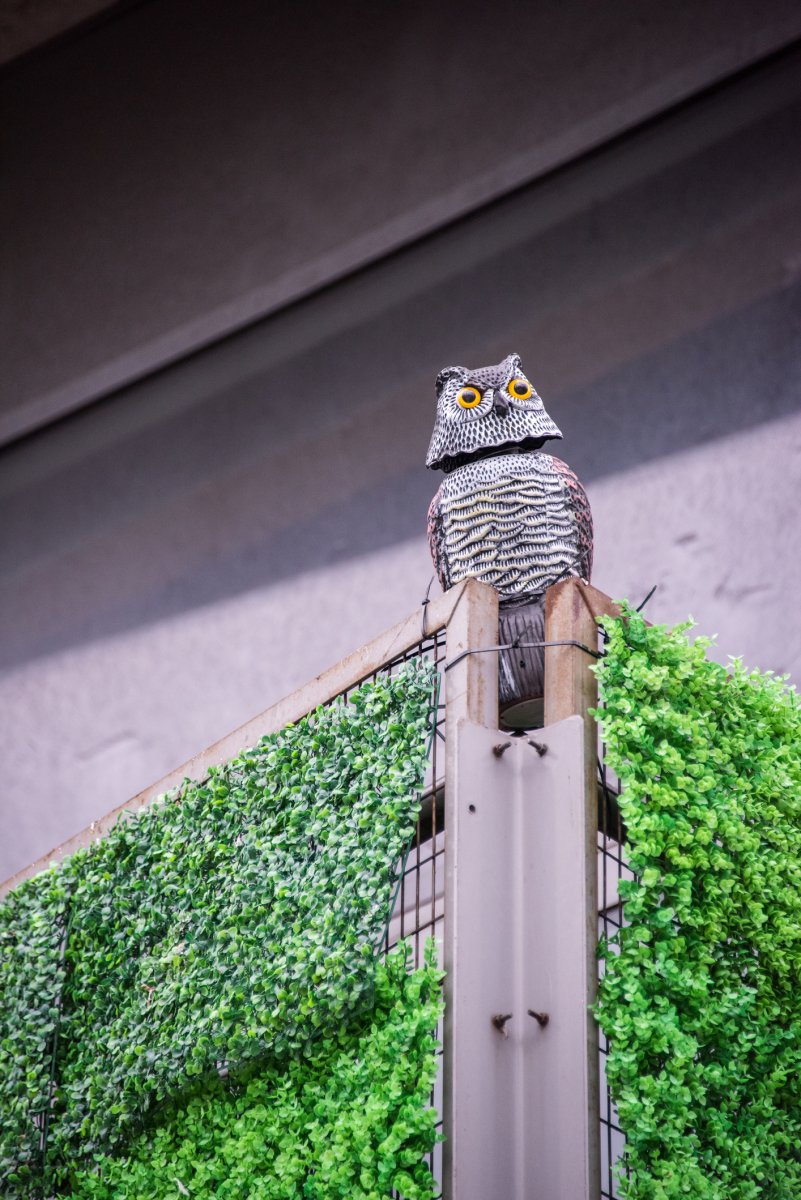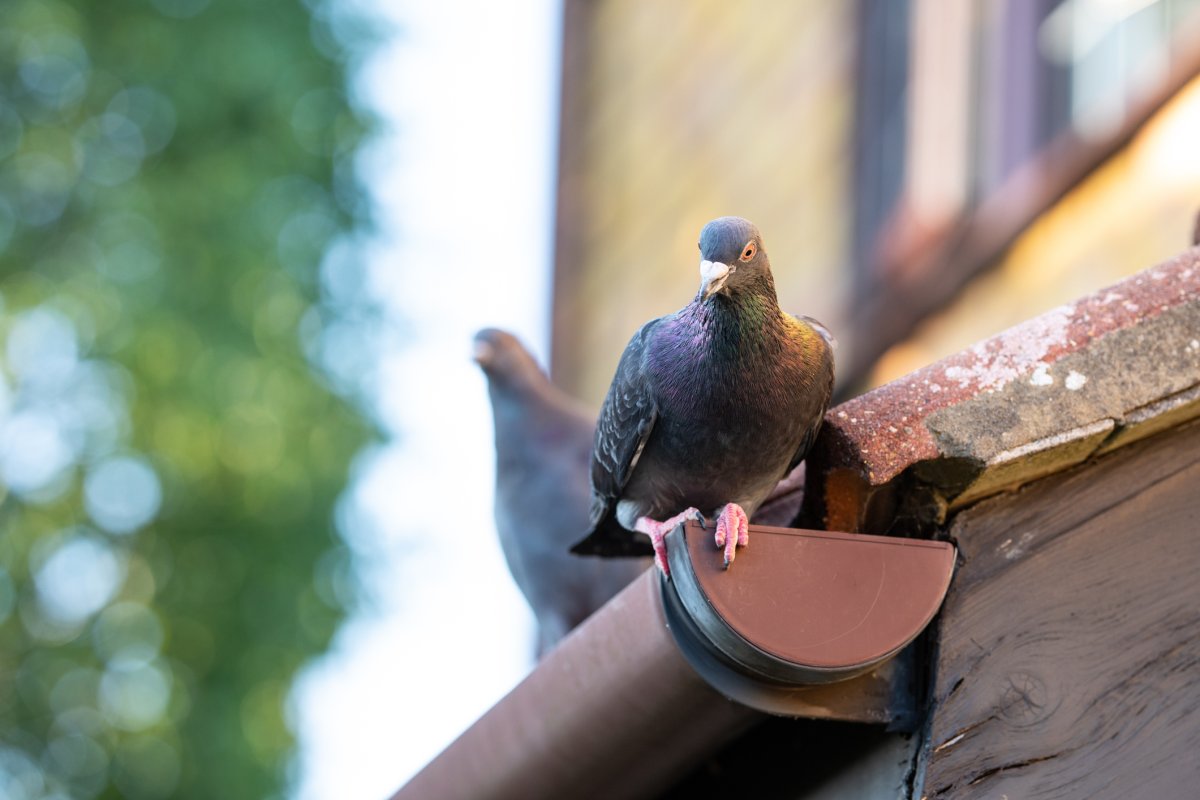

We may earn revenue from the products available on this page and participate in affiliate programs. Learn More ›
While it’s delightful spotting a vivid red cardinal or brilliant blue jay flitting around your yard or sitting on your front porch, that charm starts to fade when you realize they’re not just visiting, but actually moving into your gutters. Birds have a knack for finding the coziest nooks and crannies to build their nests, and unfortunately, your gutters check all the boxes. They provide elevated shelter and are lined with convenient nesting materials like leaves and twigs. While finding birds in gutters may at first seem like no big deal, their presence can quickly turn into problems like clogged drains, water damage, and an influx of pests like mice and wasps. Learn what you can do to keep birds out of your gutters.
Why Birds Root Around in Gutters
Each year, birds return to their home regions after migration to find the perfect location to build their nests. Although not ideal for homeowners, gutters can be prime real estate options for birds because they offer shelter, elevation, and a secluded location away from most natural predators, says Rachel Smith, manager of Cedar Rapids Animal Care and Control in Cedar Rapids, Iowa. “Birds primarily root around in gutters on houses in search of a place to nest or for bugs,” says Smith.
Birds are especially attracted to gutters that have the roofline or a cover overhanging the top, as it encloses the gutter and helps protect them from being spotted by prey who want to snatch their eggs or chicks. They will also sneak their way in easily to build their nest in the gutter if there are gaps in gutter covers, fascia boards, rooflines, or soffits. Finally, gutters that are filled with debris tend to attract birds. They love messy and neglected gutters where they will find materials like stems, leaves, and twigs to build their nests.
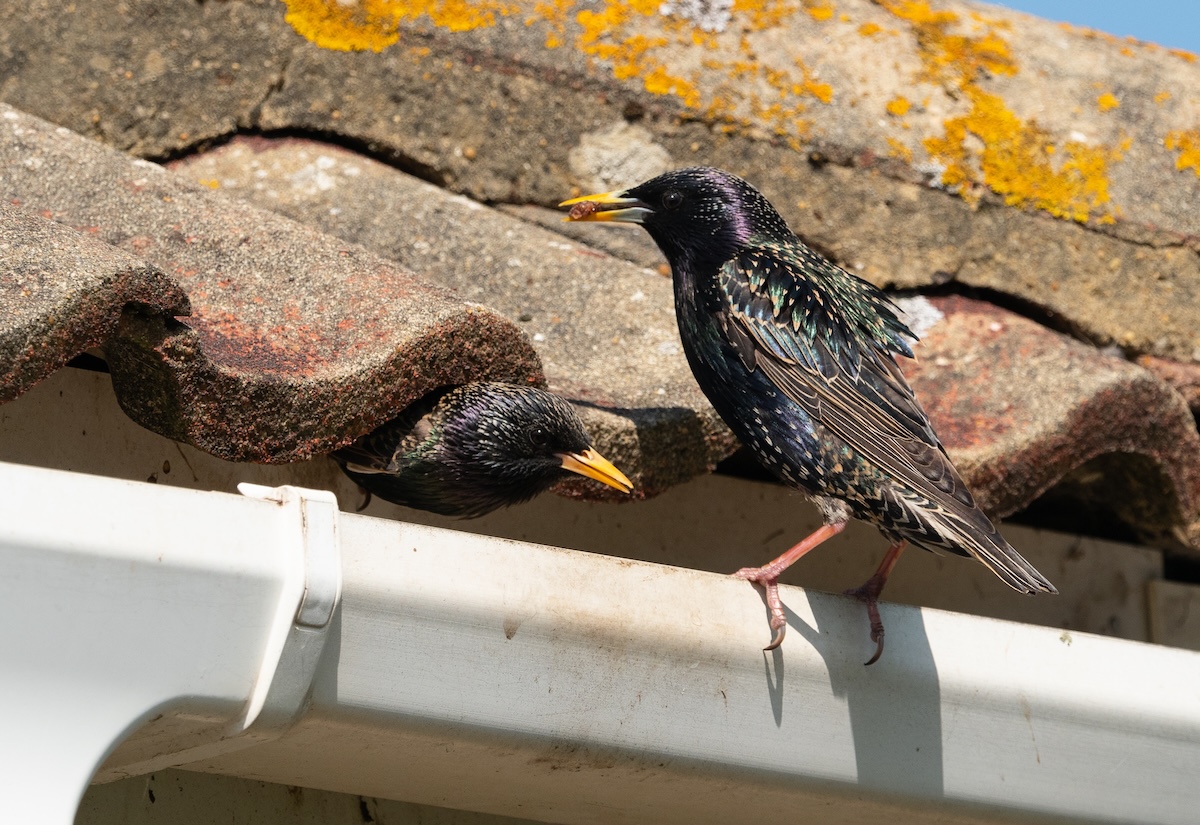
Why This Is a Problem
A number of issues can occur due to birds settling in your gutters. “Clogged gutters can result in a multitude of issues that can cause damage to a home,” says Cullen Rodgers, product innovation manager at Gutterglove, a purveyor of gutter guards. Mucked-up gutters can get expensive and cause a major headache.
“Any buildup of debris, in this case nesting materials, inside a gutter can prevent it from working properly,” Rodgers explains. If water can’t drain properly, then the gutter and downspout system can back up, causing the water to leak and overflow. Also, when water gets stuck in the gutters and sits for a period of time, the excessive water weight can damage the gutters. You could end up with a loose gutter or a gutter slope issue that needs to be repaired. If ignored, the water can eventually damage the surrounding wood of the house or lead to foundation damage.
Additionally, nests and debris buildup in gutters can attract pests like mice and wasps, according to Smith. Even raccoons and snakes could pay a visit to your gutters, chasing after the birds and their eggs. Birds can also be a host for different types of insects, such as mites, ticks, fleas, and bed bugs. Believe it or not, what seems like a friendly nest of birds could lead to a pest infestation in and around your home before long.
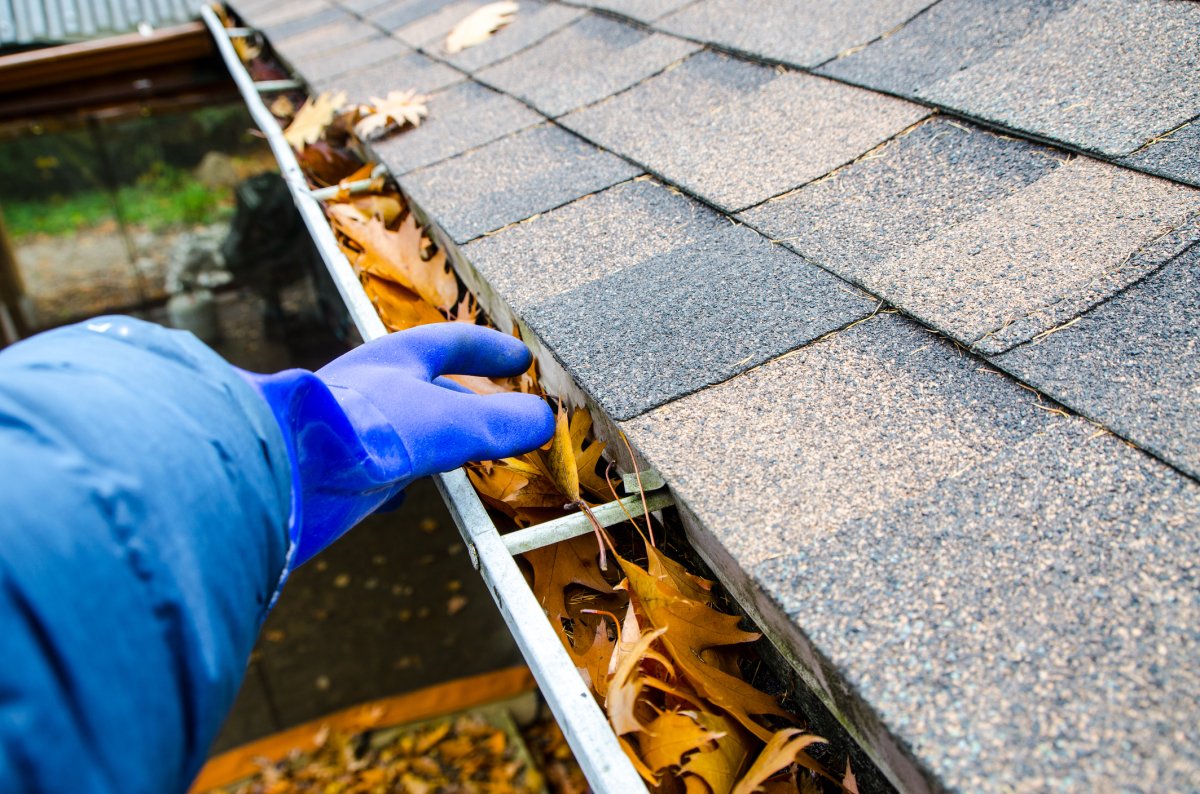
How to Deter Birds from Moving In
There are several humane practices to prevent nesting and ultimately damage to a home, says Smith. Whether you stick to a consistent gutter cleaning schedule or install physical bird deterrents, you’ll be thankful you took these important steps to prevent birds from taking over your gutters and wreaking havoc on your property. Consider combining a few of the following methods and changing their position regularly to most effectively keep birds away.
Regularly Clean Gutters
Maintaining consistent, proper gutter cleaning is your first line of defense. This will keep debris from clogging gutters. Experts recommend cleaning gutters in the spring since birds typically nest during that time of year. Then, do another cleaning in the fall before any snow or ice arrives.
If you spot a nest in a gutter during the cleaning process, you’ll want to safely remove it, according to local laws. “It is important to know that different states and jurisdictions may have laws in place which potentially make it a crime to move or tamper with a bird nest, depending on the species and whether or not it may be inhabited,” notes Smith. “That is why preventative maintenance is key to a safe home and humane coexistence with our wild neighbors. Always check your local laws or speak with the appropriate animal control agency to learn about removing a nest before doing so.”
Since birds can carry diseases and pests, be sure to wear protective gear like gloves and glasses when removing a nest. Once removed, immediately discard the nest and clean the area with an antibacterial spray. Finally, clean your hands, arms, and face with antibacterial soap and warm water.
Install Gutter Guards
The best way to stop birds from nesting in your gutters is to block the entry points, says Rodgers. “High-quality gutter guards, made from stainless steel and aluminum, act as a lid on your gutter system—keeping out leaves, twigs, and animals. Installing gutter guards can prevent these problems and save thousands of dollars in repairs.”
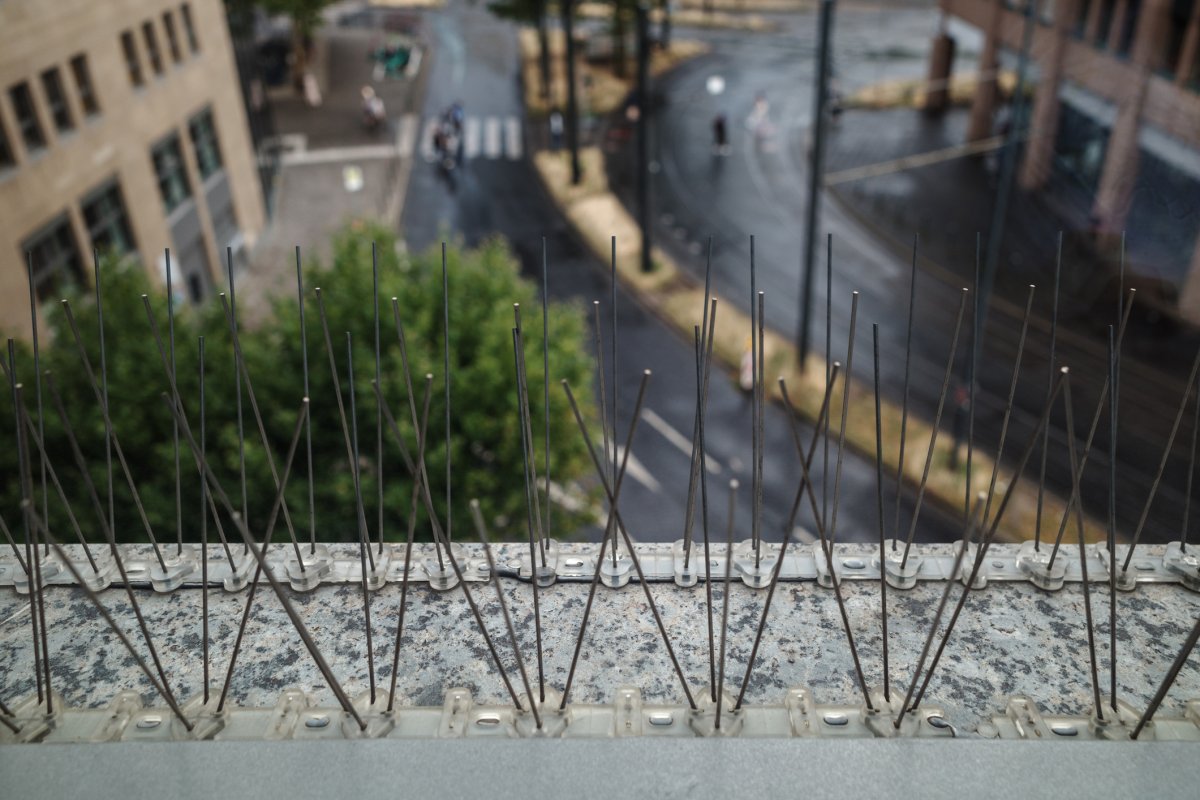
Attach Bird Spikes
Another option is to install bird spikes along gutters, which makes those areas less appealing as nesting sites, according to Smith. These are strips of spikes constructed of clear plastic or metal that can be installed along roofing eaves and on the front lip of the gutter with screws, nails, or adhesive.
It is important to know that birds are not actually harmed by the spikes. They spot the spikes and then avoid them before attempting to land. Spikes tend to be more effective at keeping away larger birds like crows, pigeons, gulls, blackbirds, and grackles compared to smaller birds like swallows, sparrows, and starlings.
Try Some Bird Repellent
Scent-based bird repellents can also help keep birds out of your gutters. Look for peppermint oil, citronella, garlic, and methyl anthranilate, as birds are known to dislike those strong smells. They can be especially effective used alongside other deterrent methods.
Purchase Bird Decoys
Placing a decoy near your gutters can also do the trick. Rubber snakes, owls, hawks, and coyotes often scare away birds since they are their natural predators. Some decoys even have special features like motion or light-up eyes, and they often look so real that they actually may scare your neighbors as well.
